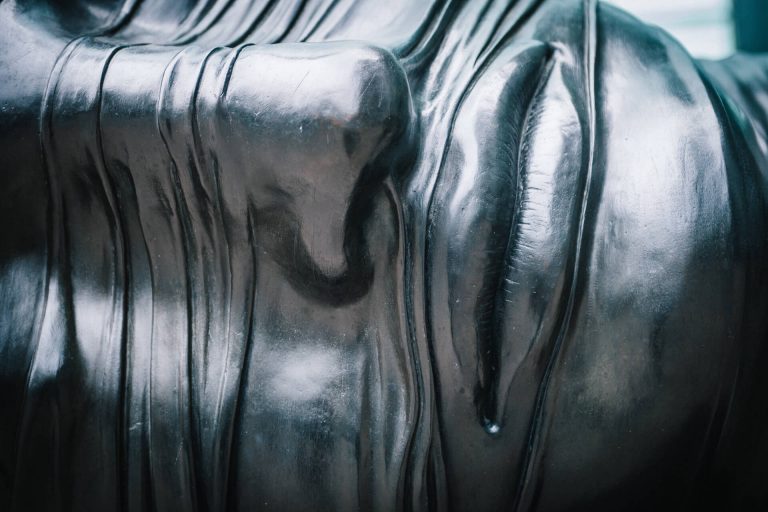Learning to read body language is essential when negotiating with clients or customers. A deal can be lost if we are unable to read non-verbal communication. An in-depth study can take years, but here are some useful tips.
Positive Signals:
- Good eye contact
- Smiling
- Nodding
- Hands clasped loosely on the lap
- Sitting or standing in a relaxed position
- Sitting forward when listening
- Displaying a sense of calm
These signals make you look confident, trustworthy and in control.
- Good eye contact is vital if you are to build rapport with somebody. You can gauge their inner feelings and encourage them to talk all by ‘looking them in the eye.’ Staring, however is not good as it can make you look aggressive and make the other person feel uncomfortable. When you are talking to someone, look away every so often but always meet their gaze after a few seconds.
- Smiling is one of the best ways to get people to warm to you. It is a fundamental human signal of warmth and friendliness. However, the smile must be genuine and a full (often known as Duchenne) smile which reaches the eyes, not just the mouth, and it should also come from the heart. It is true that ‘putting on a happy face’ really does make you feel better as a smile sends signals to the brain that you are feeling OK.
- Nodding also encourages others to talk as it gives them the impression you are interested to know more. Journalists often use nodding and smiling to get interviewees to carry on talking and trapping them into saying more than they meant to say!
- Hands clasped loosely on the lap shows that you are relaxed. When you are nervous and anxious you will tend to clench your fists, getting ready for fight or flight, so keeping the hands still and quite shows you are composed and on top of things.
Negative Signals:
- Avoiding eye contact
- Looking around the room
- Looking at the clock or watch
- Sneering
- Mouth rubbing
- Lip licking or biting
- Throat clearing
- Head scratching
- Twisting the neck
- Shrugging shoulders
- Sitting very straight
- Sprawling in a chair
- Shifting about in the chair
- Arms folded
- Wringing hands
- Finger drumming
- Crossing and uncrossing legs
- Foot tapping
As you can see, there are a large number of overt negative body language signals and all these show tensions and suppressed emotion. This is because you are getting in to ‘fight, flight or flee’ mode; to fight the foe, make a quick getaway or remain rooted to the spot. In social and business situations things are usually not so dire, but the genetic response from our ancestors is still the same. If a person is apprehensive, frightened, nervous, angry or bored they will send out some, or all, of these distress signals.

Tell tale-signs:
- In the West, if people constantly look away when you are talking to them you are likely to think they are either bored, want to talk to someone else or really do not like you. But in some countries, it is not considered polite to keep eye contact for too long. However, if you want to know someone’s thoughts and build rapport eye contact is vital because the eyes really are ‘the window to the soul’. If people constantly look away or look over your head when talking to you it means they are looking for an escape route or looking for someone more interesting to talk to. If they keep glancing at their watch or a clock on the wall, it is obvious that they are either late or want to be somewhere else. Sometimes people are quite unaware of how much their bodies are betraying them, and sometimes these mannerisms become habits because no one tells them otherwise.
- A sneer is at worst a sign of derision and at best an insincere smile. Either way, if you are the recipient of this sort of body language it is a strong sign that you are not held in very high esteem!
- Rubbing the mouth can be an indication that someone is not telling the truth, it is almost as if they are embarrassed by the fact they are telling a lie. It is the same when there is continual licking of the lips.
- Throat clearing also denotes nervousness and uncertainty as again, the saliva in the mouth dries up and the throat goes into a nervous spasm.
- Vigorous head-scratching usually means that someone is frustrated or annoyed. Pent up emotion can result in a change in body temperature which can make the scalp feel itchy.
- When tension in the body builds up, for whatever reason, it has to come out and manifests itself in different ways in different people. A lot of tension builds up in the neck. The poor old neck has enough of a job to do holding up the head, which is one of the heaviest parts of the body, so twisting the neck will help ease any tension, thus it shows you are feeling tense.
- Shrugging of the shoulders also shows frustration or anxiety as the physiological changes in the body send acid to the muscles, ready for the ‘fight or flight’ scenario.
- Sitting ramrod straight is another sign of apprehension or anger. People waiting for a job interview will usually be highly alert and therefore sit up straight. A business person infuriated by someone who is late for an appointment will show disapproval by sitting very straight, as will a school teacher or a boss about to reprimand an errant pupil or employee.
- The opposite of the ‘broom handle down your back’ position is the sprawl or lounge. This usually shows disrespect or contempt, but at the very least, a total lack of awareness as to what the body language is implying.
- Shifting about in the chair means you literally cannot sit still. There can be several reasons for this; excitement, irritation or simply wanting to go to the loo (especially in children!) But in adults, it is usually a negative sign exhibiting boredom or impatience.
- Anyone who has ever perused a body language book will have read that arms folded across the chest are a barrier position. This stance allows the arms to shield one of the most vulnerable parts of the body where the major organs are not protected by a skeleton. It can be a barrier position but it can also show that someone is cold, shy or just likes standing like that. Whatever the reason, it sends out negative signals because it can imply arrogance, stubbornness, vulnerability or nervousness.
- Wringing of the hands also shows anxiety and uneasiness. It is as if someone is trying to wash their troubles away.
- Hands can be still or fluttering. Often hands show tension and anxiety by ‘washing’ or tapping even though face and body may appear calm and in control.
- Finger drumming nearly always denotes irritation.
- Crossing and uncrossing the legs in a man is a negative sign as it shows impatience or exasperation. The body is saying ‘what are you waiting for, let’s get out of here’ and someone who does this either wants to end a meeting or move the conversation onto another subject. A woman, on the other hand, will sometimes use the crossing and uncrossing her legs to attract a man’s attention, which could be interpreted as a positive signal, or to distract him, which is negative – for him at least!
- Foot tapping, like finger drumming, nearly always denotes annoyance. A client or customer may seem politely attentive when listening to a salesperson, but the tapping foot behind the desk shows that he or she is not interested but impatient to finish the interview and be elsewhere.
- Sitting or standing in a relaxed position has exactly the same effect. People who are apprehensive and ill at ease are usually restless, and this will often show itself by walking around or constantly moving.
- Sitting forward when listening shows real interest and concern for the person and what is being said. You also sit forward when you want your listener’s full attention or agreement. Either way, it is a very positive signal.
- Displaying a sense of stillness and composure shows you are in control of yourself and your situation. It sends out signals of tranquillity and authority, which is also infectious and can help to calm others.
Positive body language comes from the heart and can look fake if it is forced, but we can avoid negative signals by thinking positively and being aware of what our bodies are saying.
Diana

** The views, information, words, concepts or opinions expressed in our blogs, articles and blog articles are solely the opinions of the individual authors and do not necessarily represent those of nStratagem, its employees or its affiliated companies.
Follow us on Twitter @n_stratagem and on Instagram at nStratagem_Group
Powerful Resources When You Need Them Most ™
nStratagem can assist you with our innovative Women in Leadership Programme and our work with providing strategic action on reducing the Gender Pay Gap. Contact us for a conversation.


